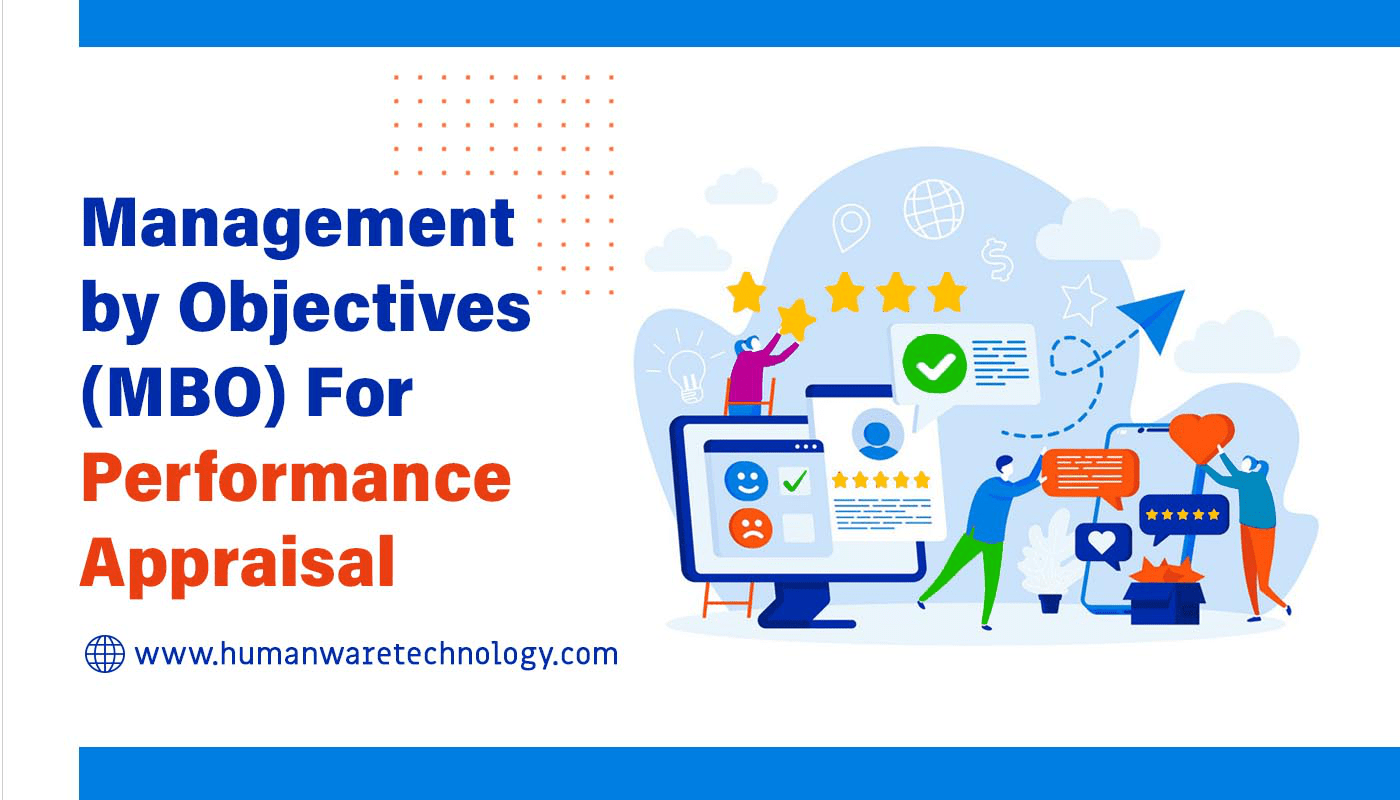
Management by Objectives (MBO) For Performance Appraisal
Businesses use strategic management models to progress toward success. 360 degree Feedback, 9 box grid for succession planning , KPI and OKRs are few of the known strategic management models. Management by objectives (MBO) is one of these strategic management models.
The MBO performance management framework attempts to implement transparency and uniformity of goals and ideals across the organization. The HR team works with business leaders to define and communicate goals and desired results to employees. When implementing the framework, it is imperative that each team member has a thorough understanding of their responsibilities and goals. Unlike the OKR performance management framework, where it is important to show improvements in each KRA even if the target is not met; The MBO requires that all objectives be achieved within the given time frame. Once the goals and objectives are defined and mapped by management, they are passed on to the respective teams as employee objectives. When managers and their teams are aligned on goals, it acts as a tailwind to achieving organizational goals.
What is Management by Objectives?
Management by objectives uses the main objectives of the company to determine the objectives of the employees. The MBO allows everyone in the business to see what they have accomplished against key business goals and priorities as they complete tasks. This shows how activity and production go hand in hand and can dramatically increase productivity.
6 Steps to Create MBO
1. Define Organizational Goals
Setting organizational goals is particularly important. HR needs to create one to three goals that you can achieve in the long term. For example, if you work in customer service, your goals might be to increase customer satisfaction by 21% and reduce customer service time by two minutes.
2. Create Employee Objectives
Once the Manager and team have created goals, the Manager and team needs to develop goals or milestones to achieve them. Try breaking goals down into smaller goals to create a schedule each individual can follow. If an employee is working with a team, be sure to communicate the steps to them to ensure everyone can work towards the same goals.
3. Continuously Monitor Performance and Progress
An MBO can create more effective management, but it can also be important for tracking employee progress and performance. Manager or HOD needs to track individual progress to make sure to reach organization goals on time. Consider creating progress and performance tracking sheets and try to hold regular meetings for the team to discuss roadblocks and celebrate accomplishments.
4. Evaluate Performance
Managers can monitor employee performance and evaluate their effectiveness. If Managers need to provide more guidance to one of your team members, you can track their progress, create a report, and discuss your work with them. Try to give practical advice that they can apply to their work.
5. Provide Feedback
One of the most important aspects of MBO is continuous feedback on performance and goals. Once the team completes an objective or step, meet with the team to discuss how the team was able to make that goal and how to continue making progress. Offer alternative feedback or praise for the team to maintain motivation and productivity.
6. Performance Appraisal
At the last stage of the Management by Objectives process are performance appraisals. Once a team completes goals, Manager or HOD should appraise each team member’s overall work. Review employee performance throughout the project to determine where they excelled and where they can improve. Offering an appraisal or reward can help them grow as employees and progress on their career paths.
Highlights
- Clarity about individual roles and responsibilities, employees will feel they are valuable assets to the organization, which becomes a driving force for productivity.
- Management by Objectives promotes accountability, teamwork, cross-functionality, communication, and effective collaboration.
- Defining clear objectives help to promote transparency across the organization, which brings harmony within the team.
- When employees have unique roles, they feel indispensable to the organization which motivates them to accomplish their goals effectively.
Challenges
- Excessive emphasis on targets over process can prevent employees from achieving their goals.
- Continuous focusing on targets and no result can negatively affect employees motivation and lower overall morale at the workplace.
- Since Management by Objectives depends as much on goals as it does on receiving feedback, it is important that management stays invested in the process and gives clear feedback along with appropriate rewards and recognition. A lack of cooperation from management could derail the whole Management by Objectives process.
- The significance of goals must be described and discussed with the team to bring clarity or employees may feel demotivated with a lack of a clear purpose.
Conclusion
The Management by Objectives method is a strong feedback system for companies whose teams have been working together for some time and want to know how effective individuals are in their roles. It allows you to get solid and useful feedback from a wide range of company stakeholders, subordinates, colleagues and leaders. It enables continuous real-time feedback with a user-friendly interface, insightful analytics, customizable configurable quizzes, and most importantly, an anonymity feature. It is recommended to use this tool in combination with other types of research and assessment tools. The most important aspect of the Management by Objectives system is that organizations should conduct it repeatedly and consistently with the team and management.